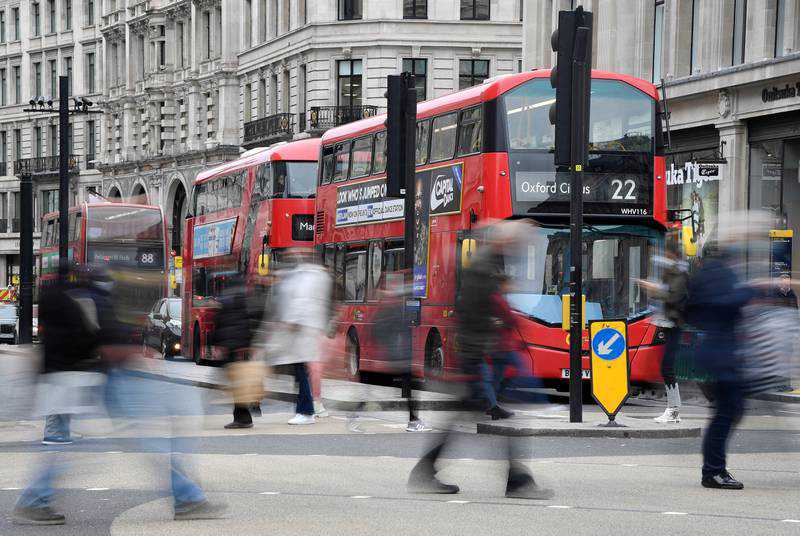Britain’s unemployment rate dips to 4.3% as vacancies hit record 1.3 million

Britain’s unemployment rate dropped to 4.3 per cent in the three months to end of September as 160,000 people were added to payrolls, official data shows.
Fears about the end of the UK government’s furlough scheme were eased as job vacancies hit 1.17 million in the three months to October, said the Office for National Statistics.
Early figures show a record figure of almost 1.3 million vacancies in October as companies struggle to hire staff amid labour shortages.
Chancellor of the Exchequer Rishi Sunak said the latest labour data is “testament to the extraordinary success of the furlough scheme” and confirms that the government’s jobs plan during the Covid-19 pandemic “worked”.
"We know how vital keeping people in good jobs is, both for them and for our economy – which is why it’s fantastic to see the unemployment rate falling for nine months in a row and record numbers of people moving into employment,” Mr Sunak said.
The 0.2 per cent drop in the unemployment rate from the 4.3 per cent seen in the three months to August came despite the UK government ending its furlough jobs support programme, which kept millions of private sector workers in their roles during the Covid-19 crisis, in September.
There had been fears the end of the scheme could lead to a surge in unemployment with an estimated 1.1 million people still on the programme in the final days.
But demand for workers has remained robust since the economy fully reopened in the summer, with gains in employment particularly strong in sectors such as administration, hospitality and healthcare.
"It might take a few months to see the full impact of furlough coming to an end, as people who lost their jobs at the end of September could still be receiving redundancy pay," said Sam Beckett, head of economic statistics at the ONS.
"However, October's early estimate shows the number of people on the payroll rose strongly on the month and stands well above its pre-pandemic level."
The strength of the UK labour market bolsters the case for the Bank of England to raise interest rates as soon as next month.
Susannah Streeter, senior investment and markets analyst at Hargreaves Lansdown, said the latest figures are “another layer in the economic jam sandwich, indicating that higher prices may prove a lot stickier than first thought”.
“Fears that a big chunk of furloughed staff would lose their positions led to the BoE holding off an interest rate rise at the last meeting,” she said.
“But the jobs queues are getting shorter, as the big fight for staff continues … [and] the governor Andrew Bailey says he’s uneasy about rising inflation and the jobs figures are another indicator that there could be a fresh sugar rush of higher wages.”
Payrolls were 235,000 higher than when the pandemic struck in February 2020 with underlying wage growth excluding bonuses between 3.4 per cent and 4.9 per cent in the quarter through September, up from around 3 per cent before the pandemic.
The pandemic has left the UK with a workforce shortage of 950,000, according to research group The Institute for Employment Studies, which defines that measure as the difference between the number of people in the labour market now and what would have been expected based on pre-crisis trends.
Just over half a million are older workers who have dropped out of the job market. Up to a third of that is from lower migration, and the rest are younger people who have gone into education.
Matthew Percival, director of people and skills at the Confederation of British Industry, said while the UK’s jobs outlook remained strong over the summer “ongoing supply chain issues, labour shortages and record high vacancies have put a brake on growth”.
Ms Streeter said the supply chain crisis has already spread around the globe, pushing up costs for companies and showing little sign of easing just yet.
"The pandemic bounce-back has buttered up demand for goods, and now potential has grown for higher wages to congeal," she said.
"The official Labour Force Survey won’t be released until December 16 but, if the jam sandwich of sticky prices shows little sign of easing, it looks increasingly likely the Bank will raise rates at its meeting two days later.’’
Tags :
Previous Story
- Johnson Matthey's exit from EV battery market delivers...
- UK removes all 7 countries from red list...
- UAE to UK flight bookings surge after Sinopharm...
- UK economy slows sharply in third quarter as...
- Rolls-Royce gets funding to develop mini nuclear reactors
- New York gears up for tourists' return as...
- Countries pledge to quit coal — but the...
- Bill Gates doubts goal of limiting global warming...